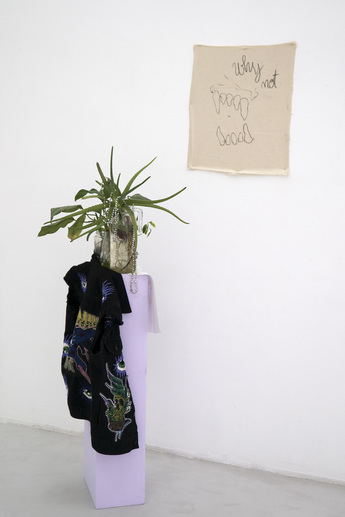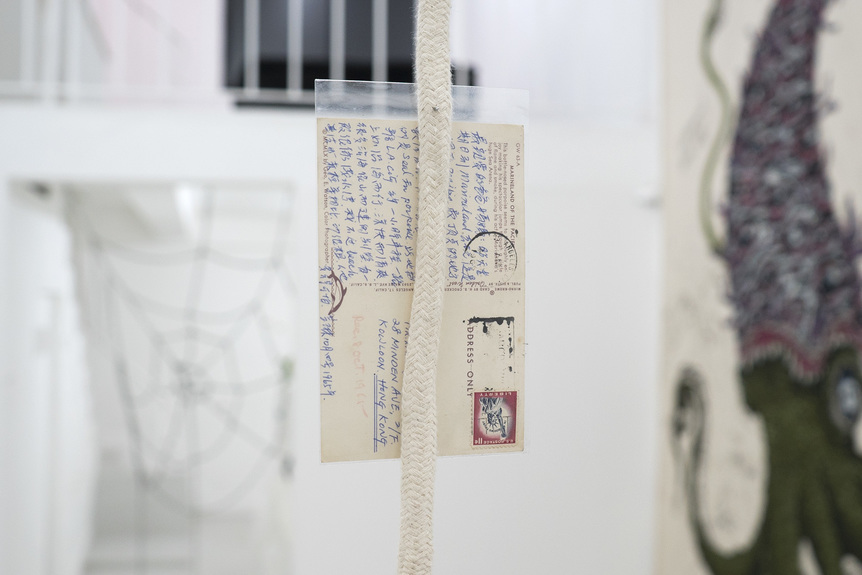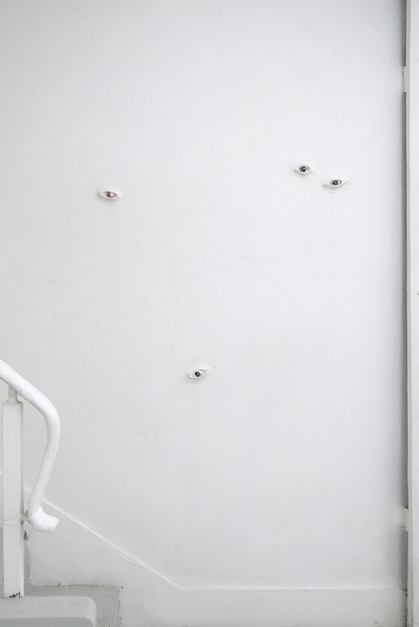-
From Current Issue
-
- Editor’s Letter Fire in the Heart
- Reviews I Gusti Ayu Kadek Murniasih
- Reviews 11th Seoul Mediacity Biennale: “One Escape at a Time”
- Dispatch Networked China
- One on One Monira Al Qadiri on Yukio Mishima
- Essays The rise of independent art spaces in pandemic-era Shanghai
- Features Tuan Andrew Nguyen
- Table of Contents
- Web Exclusives
- Archive
- Subscribe

R
E
V N
E
X
T
Installation view of COLLECTIVE OF FICTIONAL INDIVIDUALS’ “ICRY4U,” at TARS Gallery, Bangkok, 2019. All images courtesy the artists and TARS Gallery.
Typically, when a gallery stages an exhibition, the gallerist directs the participating artists to make or supply the artworks to be displayed. For their show “ICRY4U” at Bangkok’s TARS Gallery, the anonymous Collective of Fictional Individuals (COFI) turned this formula on its head by emailing gallerist Pierre Béchon instructions, detailing how to construct the exhibits and leaving him to produce the works for them.
Pragmatism aside, given the geographical distance between France, where most of the group members live, and Bangkok, where the exhibition was staged, this hands-off approach is COFI’s preferred working method, since the self-identified internet collective prioritizes concept over form. Previous projects took place online, and all traces of their existence were later expunged from the internet so the works persist merely as memory or myth. By the same reasoning, images from the current show, which can currently be found on the TARS Facebook page and COFI Instagram account, will be taken down when the show comes to a close. Given the mounting societal pressure to publicly archive ourselves on the internet, this constitutes something of a radical act.
For their first exhibition in a physical space, the collective took pains to
keep digital logics a part of the equation. Most notably, visitors were
prompted to use their phones to scan a QR code near the entrance, which conjured a virtual exhibition map, list of titles, and hyperlinks on their
screens. The first work on the list was a baffling assemblage consisting of a drawing, some aloe vera plants, an embroidered jacket, a beaded necklace, and a Siamese fighting fish, the data entry for which reads: “Services available at [email protected]” (2014–19). Under this text is a link to the definition of phishing, implying with a wink and a nudge that COFI is literally engaged in internet fraud—which might explain, in part, their insistence on anonymity. This is followed by another hyperlink referring to the phrase noyer le poisson (drowning the fish), the French analogue to “beating around the bush,” and COFI’s suitably indirect admission of their intent to resist easy interpretation.
Viewers were provoked to become detectives in search of significance at every turn in the show. Another assemblage consists of a rope dangling from the ceiling with a found postcard affixed at eye height; the front depicts a porpoise jumping through a burning hoop, while the back bears a Statue of Liberty stamp, a Hong Kong address, and Cantonese writing. The tail of the rope lies tangled on the ground, ensconcing a second postcard depicting an endangered serval. A consultation of the databank reveals the title I cry for you (2019), and a link to the definition of poaching. Given the ongoing pro-democracy protests in Hong Kong, one might infer that this piece bemoans not only a loss of global biodiversity, but also the curtailment of civil liberties worldwide, aided and abetted by such technologies as facial recognition and web surveillance.
Other works include AIHD (2016–19) with plaster and clay models of crying eyes embedded in the gallery walls, and Zombie squid (2019), a giant painting of the titular subject. According to a Facebook post by TARS, the painting symbolically associates the ongoing global explosion of squid populations induced by climate change with the enduring popularity of post-apocalyptic zombie games and movies. Facebook posts like these are essential to deciphering the exhibition, as there is no printed press release, and the links provided by the virtual exhibition guide raise just as many questions as they answer.
Perhaps more importantly, COFI wrote an ironic anti-manifesto in the Facebook event description for the exhibition’s opening, denouncing “boring statements or exhibition intros.” They instead proclaimed: “GUCCI GANG, GUCCI GANG, GUCCI GANG.” Their nihilistic attitude was also neatly foreshadowed in the very first show announcement, posted to TARS Gallery’s Facebook page on July 25: “ICRY4U by the COFI collective . . . An exhibition about the sad millennial generation.”
“ICRY4U” is on view at TARS Gallery, Bangkok, until September 29, 2019.
To read more of ArtAsiaPacific’s articles, visit our Digital Library.


















